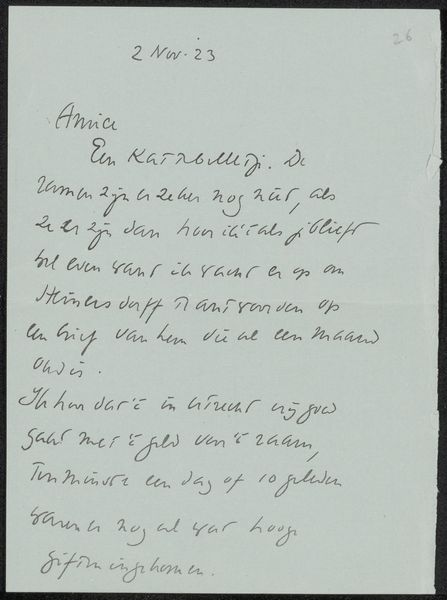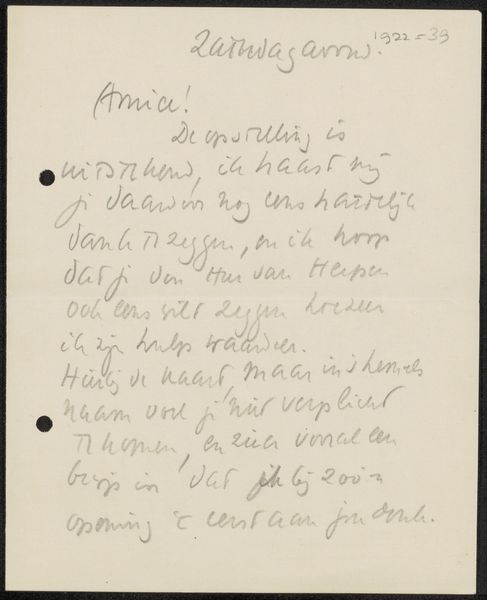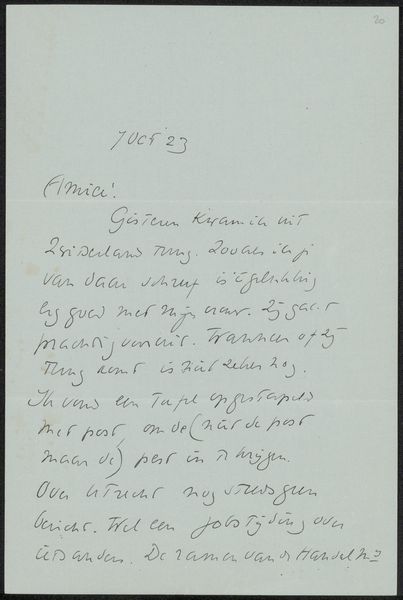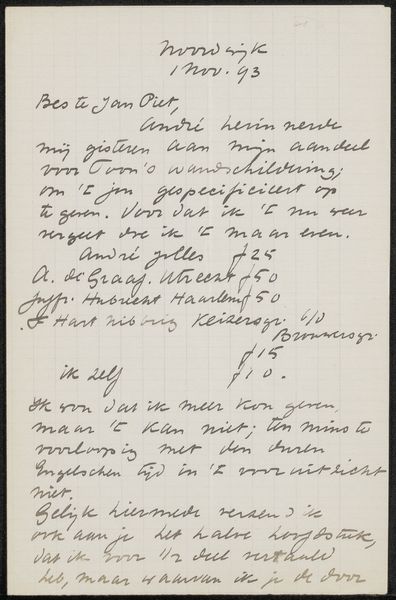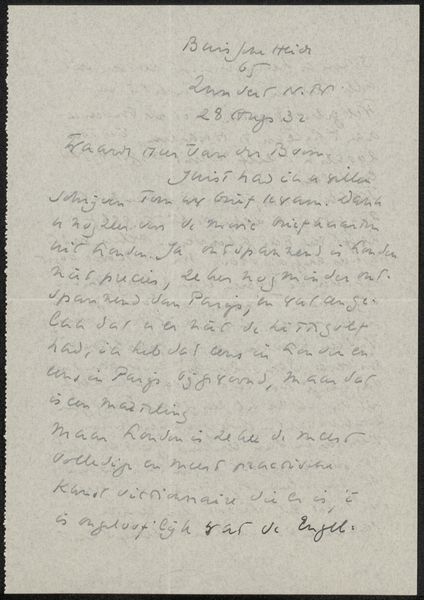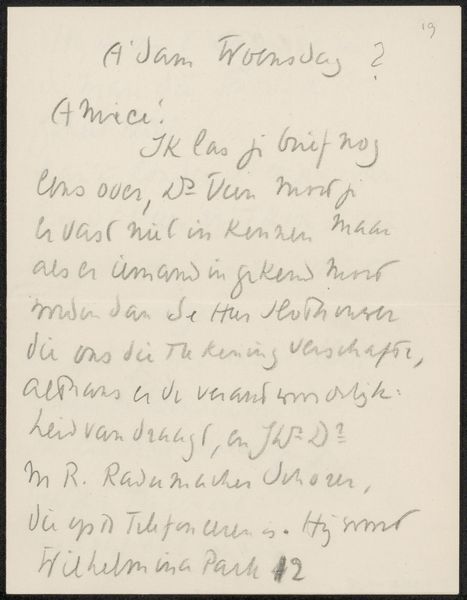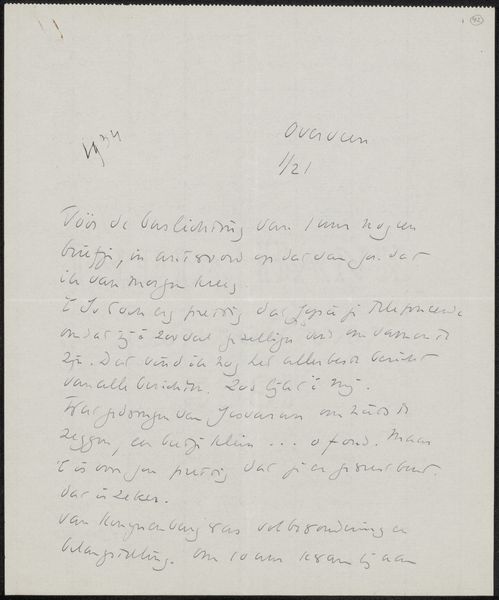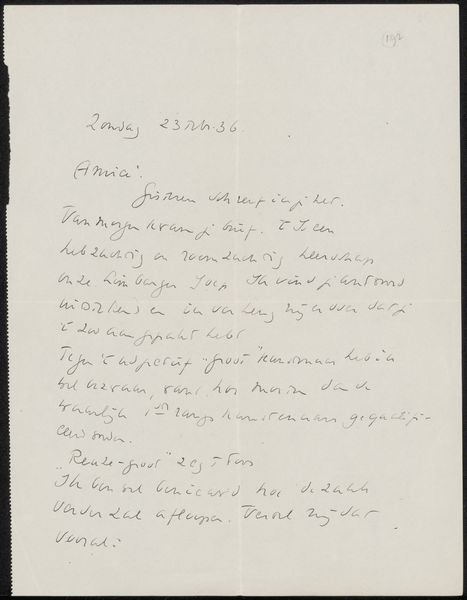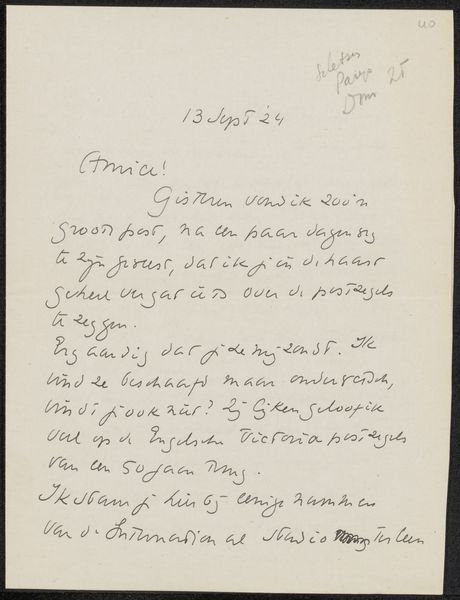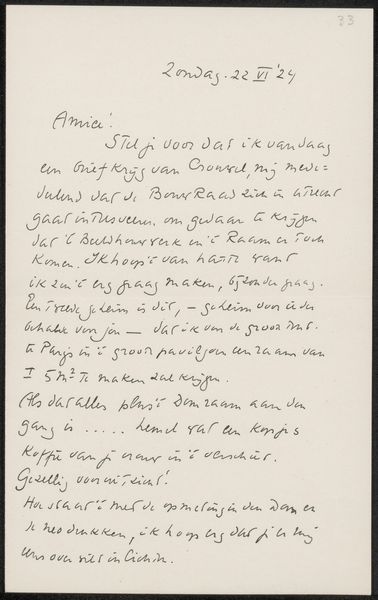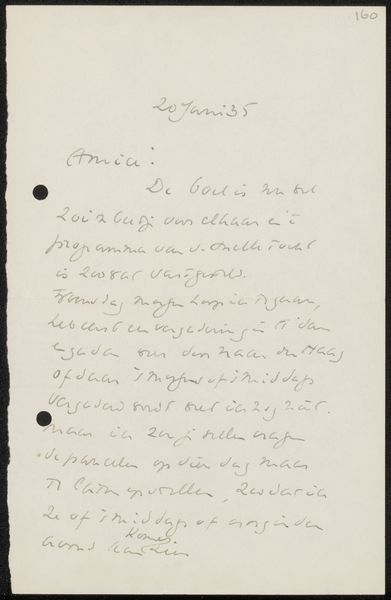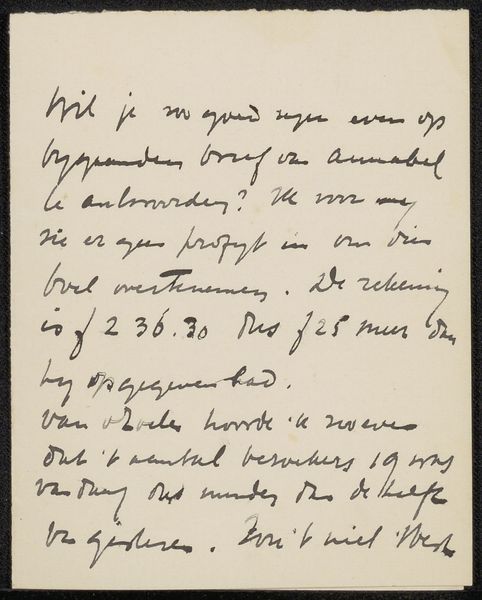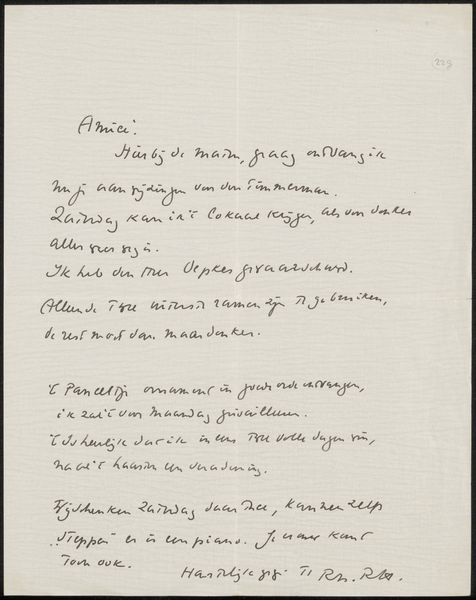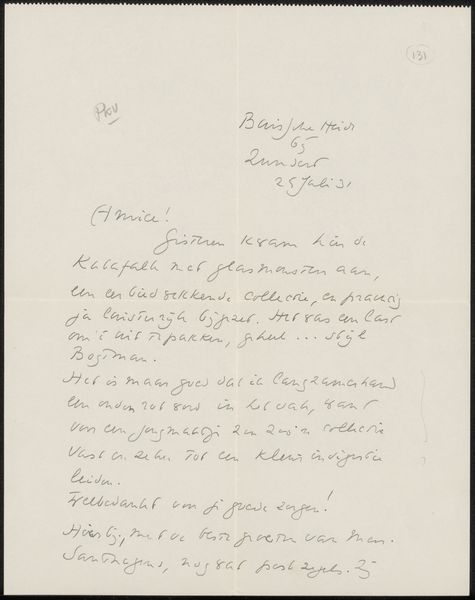
drawing, paper, ink
#
portrait
#
drawing
#
narrative-art
#
paper
#
ink
Copyright: Rijks Museum: Open Domain
Curator: Before us, we have "Brief aan Willem Bogtman," a drawing from 1923 by Richard Nicolaüs Roland Holst, held here at the Rijksmuseum. It appears to be an intimate letter rendered in ink on paper. What strikes you initially about this piece? Editor: There’s a real immediacy to it, almost fragile. The handwriting suggests a rapid thought process, unfiltered. A feeling of closeness, like eavesdropping on a private exchange. Curator: Holst, while known for his social engagement through art, truly explores a sense of intimacy in his work. What makes this handwritten letter in particular resonate is its departure from monumental works to delve into a personal medium. Editor: Absolutely. The act of writing itself becomes a performance, especially within the historical context of emerging technologies. The artist makes the personal, handwritten touch even more profound. The use of cursive script communicates that in itself, even if one doesn't necessarily understand the precise semantic meaning of the lettering. Curator: Examining it closer, notice the density of the lines and spacing. The pressure applied with the ink implies fluctuations in the writer's intensity as well, creating a distinct rhythm, wouldn't you agree? Editor: The ink becomes the emotional medium itself, fluctuating on the page. Furthermore, the choice of rendering narrative art in such a delicate form invites questions of accessibility of fine art to the masses and his personal values. Who was Willem Bogtman? Was he a close friend, a lover, a patron? What specific dialogues might they have engaged in? Curator: We can imagine. Looking back, this piece certainly showcases the enduring power and beauty found in intimate forms of human communication. Editor: Yes, and it shows a sensitivity towards others that extends beyond any sociopolitical concerns. A poignant look at humanistic care that we must recognize, and even celebrate, from both aesthetic and historical viewpoints.
Comments
No comments
Be the first to comment and join the conversation on the ultimate creative platform.
